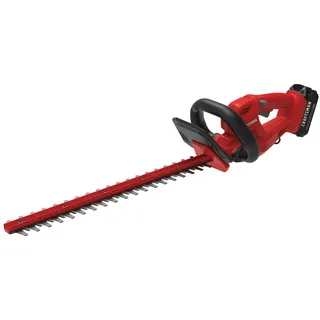Overgrown bushes can make any yard look messy and neglected. Whether you’re dealing with unruly hedges, tangled branches, or out-of-shape shrubs, the right tools and techniques can make all the difference. This guide will walk you through how to tackle overgrown bushes with a powerful hedge trimmer, turning your landscape from wild to well-manicured in no time.
Why a Powerful Hedge Trimmer Matters
When it comes to trimming thick, overgrown bushes, not just any tool will do. A manual hedge clipper may work for light pruning, but dense foliage and thick branches require the muscle of a powerful hedge trimmer. These tools cut through stubborn growth efficiently, saving time and effort while delivering clean, sharp results.
Key Features to Look For:
- Motor Power: Choose a trimmer with at least 20 volts (cordless) or a high-amperage corded model.
- Blade Length: Longer blades (20 inches or more) are better for large or wide bushes.
- Blade Type: Dual-action blades offer smoother cuts and less vibration.
- Ergonomics: Comfortable grip and lightweight design reduce fatigue during longer tasks.
Step-by-Step Guide: How to Tackle Overgrown Bushes with a Powerful Hedge Trimmer
Now that you’ve got the right trimmer, follow these steps to get professional-looking results.
1. Prepare the Area
Before trimming, clear the space around the bush. Remove any obstacles, cover nearby plants to protect them from falling debris, and wear protective gear—gloves, eye protection, and sturdy clothing.
2. Assess the Bush Shape
Visualize the final shape you want. It’s usually best to keep the bottom of the bush slightly wider than the top so sunlight reaches all branches evenly.
3. Start Trimming from the Top
Using your hedge trimmer, start at the top and work your way down. Use smooth, sweeping motions. Let the powerful hedge trimmer do the work—don’t force it.
4. Move to the Sides
Trim the sides with vertical motions. Step back occasionally to ensure you’re maintaining an even shape. Cut away only a few inches at a time; it’s easier to take more off than to fix over-trimming.
5. Clean Up and Inspect
After trimming, clear away clippings and inspect your work. Make touch-ups as needed, especially in hard-to-reach spots.
Tips for Long-Term Maintenance
- Trim your bushes regularly—about every 6 to 8 weeks during the growing season.
- Keep your trimmer blades sharp and clean.
- Avoid trimming during extreme heat or drought conditions, as this can stress the plant.
Maintaining your landscape becomes much easier once you’ve learned how to tackle overgrown bushes with a powerful hedge trimmer. Not only does your yard look neater, but healthy, trimmed bushes also grow better and live longer.
Conclusion
A well-kept yard starts with well-maintained bushes. By learning how to tackle overgrown bushes with a powerful hedge trimmers, you equip yourself with the skills and confidence to handle even the most neglected greenery. Invest in a good-quality trimmer, follow proper techniques, and you’ll transform your landscape with ease.


